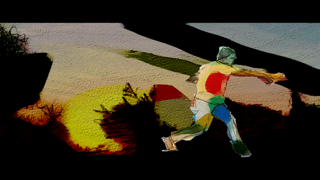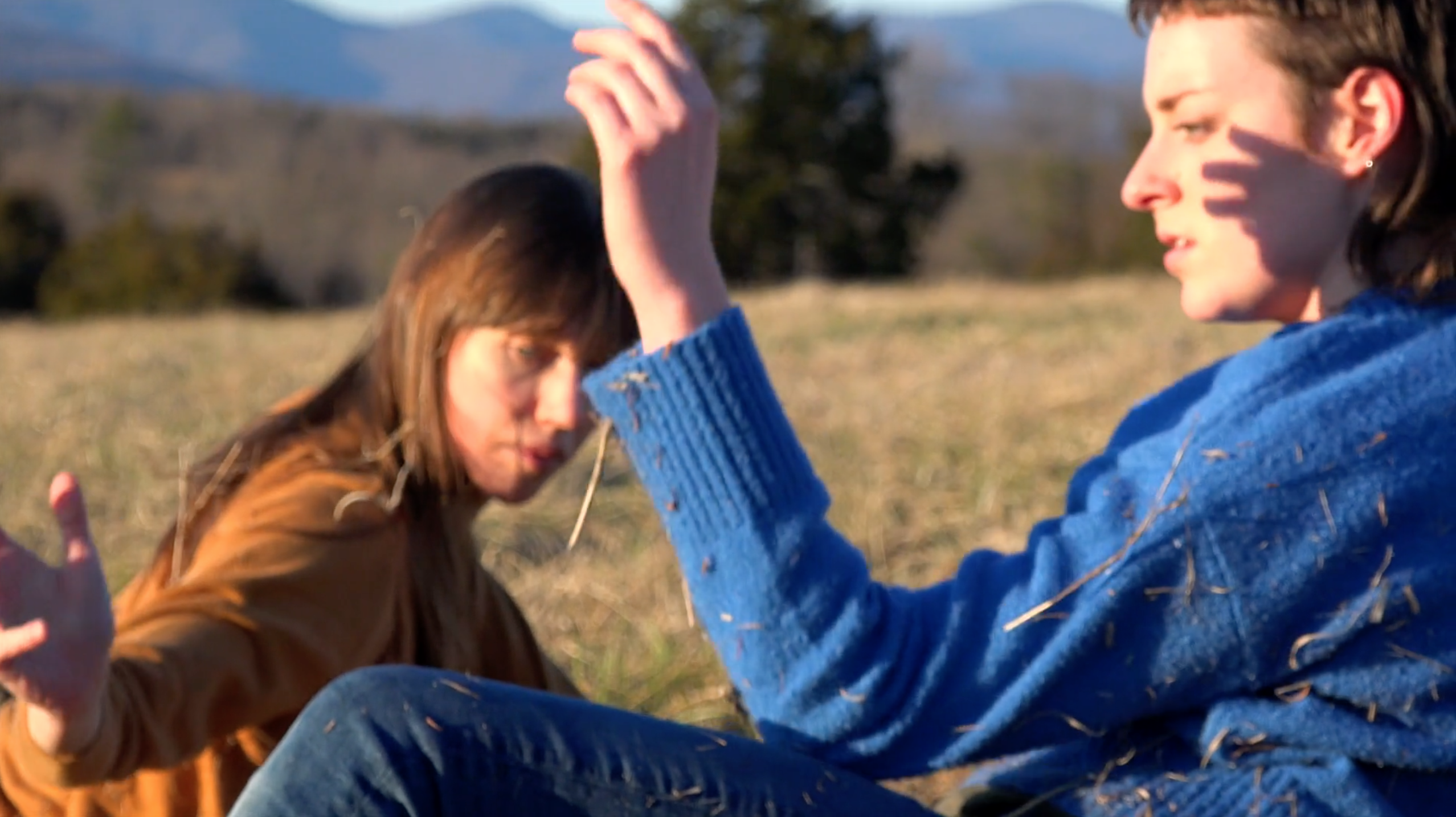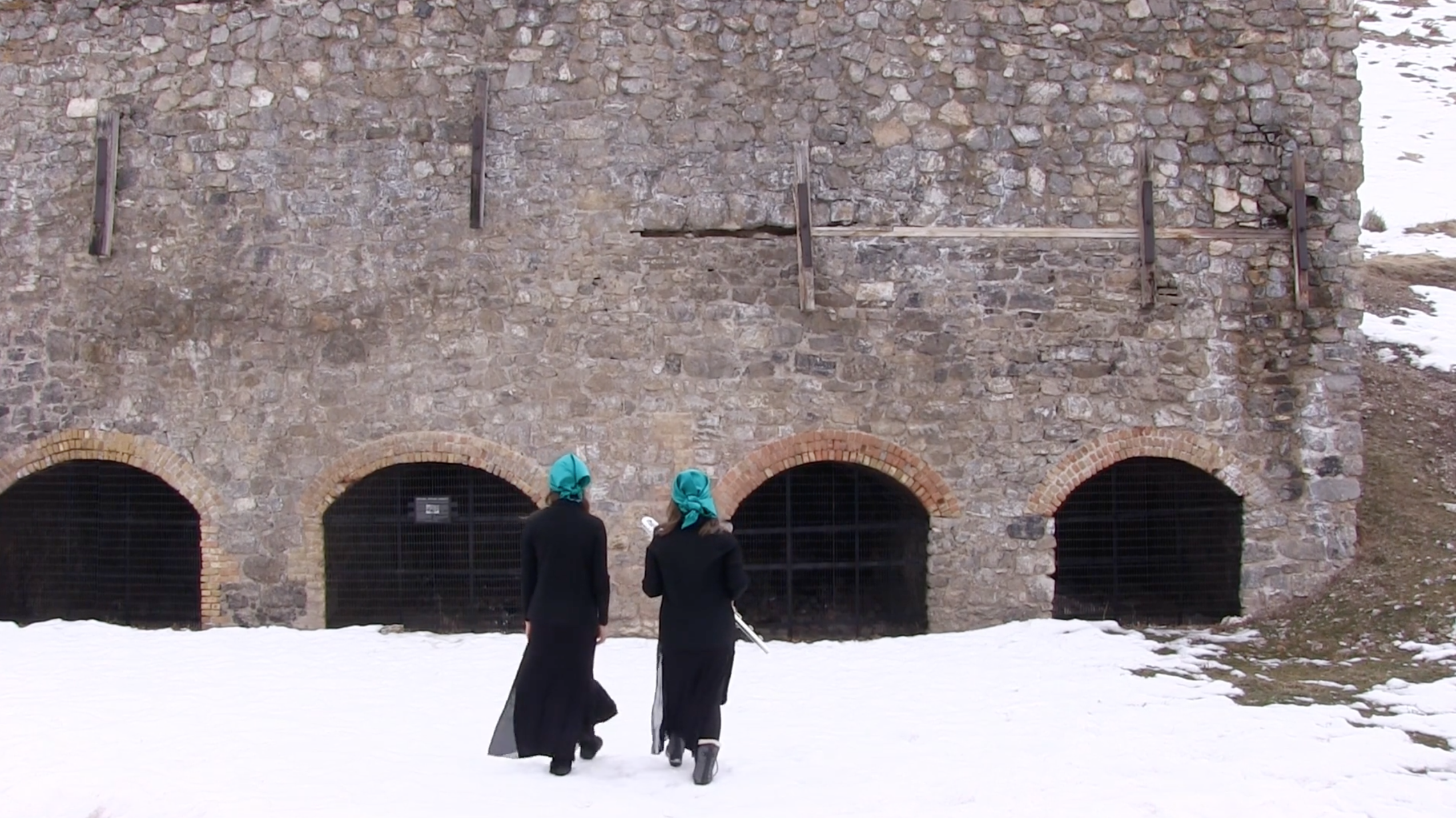WRITTEN BY EMERI FETZER
In 1999, the University of Utah School of Dance hosted the first International Dance for Camera Festival and Workshop on campus, spearheaded by Distinguished Professor Ellen Bromberg. This event laid a strong foundation for screendance in Utah. At the time, it was groundbreaking.
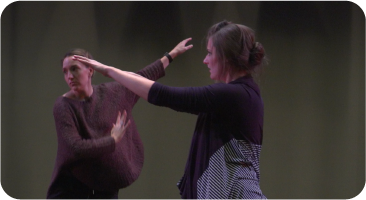
Still from film by Benjamin Sanford. Joanna Lees and Crystal Dosser during screendance seminar with Theirry de Mey.

Still from film by Benjamin Sanford. Joanna Lees and Crystal Dosser during screendance seminar with Theirry de Mey.
Right here in Salt Lake City, students could access original works from global artists in what many may have considered a niche medium at the time.
Now, decades later, screendance is not only time-tested — it’s exploding. More students each year want to dedicate their educational focus to the medium.
Not so niche anymore.
Katrina McPherson, Bromberg’s recent successor as the new Director of Screendance and Adjunct Assistant Professor at the U, is ready to meet increased interest with expanded offerings in what is still a top-notch program internationally.
Right from its inauguration in 2010, the Graduate Screendance Certificate program has been a comprehensive collaboration between the Department of Film & Media Arts and the School of Dance. Students pursing master’s degrees in either dance or film can complete the program as an additional credential. They take professional-level production courses with state-of-the-art equipment, as well as movement and theory classes, equipping them with a rich skillset from which they can draw.
A Senior Capstone course, taught by McPherson for three years now, allows for in-depth investigation culminating in the production of finished works.
Bromberg meticulously cultivated this curriculum over time. Keeping the U on the cutting edge, she often enlisted working artists at the top of the field for guest residencies and workshops.
Based in Scotland, McPherson was one of those trusted collaborators. The two first met at the IMZ Dance Screen festival in 2000, where McPherson’s film “Moment” was awarded Best Screen Choreography. Bromberg was on the jury.
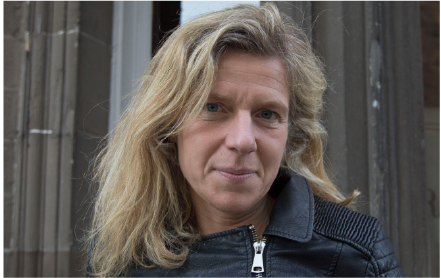
Katrina McPherson. (Photo by: Photo: Collin McPherson)
An acclaimed screendance artist, lecturer, mentor, and facilitator, McPherson knows firsthand the strong reputation of the U’s program around the world. From solid roots planted by Bromberg and fellow colleagues in the School of Dance, it is clear that the program will only continue to bloom and expand in coming years.
When a global pandemic forced dance courses online last spring, it also accelerated Bromberg’s transition, and soon McPherson took over fundamental courses as well as the Senior Capstone.
Screendance was well-poised to adapt to virtual formats. Fortunately, she had become accustomed to teaching online from Scotland, and her students were used to the free reign of weeks of independent work on their projects.
“Senior Capstone was established as hybrid in nature. I came out for a two-week period in January and a two-week period in March, and in between I worked remotely with the students,” McPherson explained.
The dynamic has allowed screendance to include students not local to Utah, expanding the community and enriching the learning environment. Some participants came from California, Canada, and the UK.
“Since the pandemic, all of my teaching has really opened up globally. It’s becoming clear to me what are the aspects that would be fantastic to be able to do live again when we get the opportunity. But there’s the other side where there is really no reason for anybody to fly or be anywhere specific, where students can be working within their own context. It’s kind of a win-win situation.”

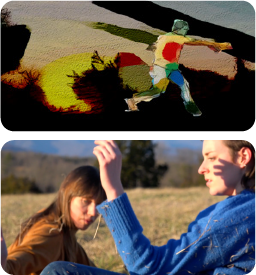

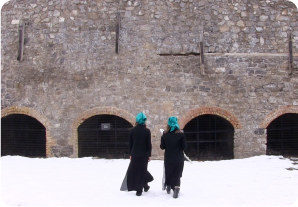
Top Left: Still from film by Benjamin Sanford. Joanna Lees and Crystal Dosser during screendance seminar with Theirry de Mey. Top Right: Still from “Stages” by student Angela Rosalis Challis (2019) Bottom Right: Still from “Traces” by Kim Brooks Mata (2020) Above: Still from “Hohl” by student Carly Schaub (2020)
Still from film by Benjamin Sanford. Joanna Lees and Crystal Dosser during screendance seminar with Theirry de Mey.
During the Fall 2020 semester, it became obvious that it would be beneficial to open up some of the screendance offerings to the undergraduates in the School of Dance, in another welcome expansion of the programming.
“If we can imagine the possibility of working with students right from their freshman year, through to their senior year, there’s a possibility of building up a very in-depth multifaceted experience.”
As this continues into the coming semesters, School of Dance Associate Professor Michael Wall and Assistant Professor Daniel Clifton will officially join the screendance faculty.
“In as wide, broad, and deep education as can be offered at the University of Utah, as a dance student, one has the opportunity to really explore all the different aspects of screendance,” McPherson said.
McPherson is the author of “Making Video Dance,” a step-by-step guide to creating dance for the screen, which was published by Routledge in 2006, with a 2nd edition released in 2018. This remains the only workbook for screendance and is used as a core text for courses at universities and colleges worldwide.
Her approach to teaching is movement-based and experiential. With the aim of developing an embodied understanding of screendance, she guides students in personal and group explorations, through carefully-planned practical and scholarly exercises and assignments and, by doing so, encourages a deep and authentic engagement with the hybrid art form.
“Learning about camera and frame, shots, and editing — these practical skills are applicable with whatever sort of screendance you are making. At every level actually, there’s a practice element, a skill-based element, but there’s also this kind of more theoretical and historical engagement as well.”
As with any art, it is important to delve into the history of past pioneers in order to continue innovation into the future. This is an important element of screendance training at the U.
“Dance in film has been there right from the beginning of cinema. There are some key figures like Maya Deren, Shirley Clarke, and Amy Greenfield who were primarily dancers and choreographers who then moved into making screen-based work and pushed the form forward. In the teaching we do a lot of looking at their works, and the context it was being made in. We take inspiration evolving from Independent Cinema, dance made for television, and then in the last two decades, the rise of the internet and digital nonlinear editing and much more accessible technology which has expanded the field,” McPherson said.
No matter what students will pursue — whether making dance for screen, choreographing live performance, or being faced with successfully documenting performance (as so many have suddenly had to do), McPherson feels screendance study gives artists more tools as creative beings, to be able to move in any direction.
“This education is so helpful for dance students at the moment at whatever level they find themselves, because it’s, in a way, deepening their understanding of the potential. It comes back to intentionality. There are so many reasons for dance and the moving image to intersect. What are you trying to communicate and how do you get there?”
The sky is the limit. ■

